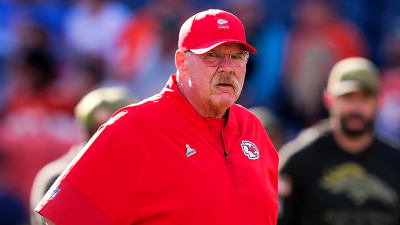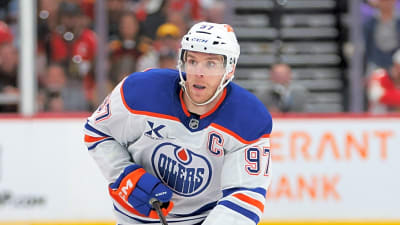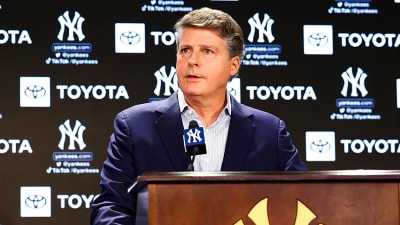
There are many glorious science-based terms when it comes to surfing. We all talk about swells, of course, the underwater energy that creates a breaking wave. But we'll look at swell angles and bathymetry and energy, a new term making the rounds at the moment, and all these phrases eventually gel together to form our understanding of what's going on in the ocean.
There are also dozens of different types of waves to get to grips with as well—reefbreaks, A-frames, points, beachies, slabs, big waves and the list goes on and on and on. This is just the tip of the surf science iceberg. There's so much that goes into it that you can dedicate your life to figuring out the many nuances that the ocean can (and will) throw at you.
And then there's the fact that when you look at your local surf forecast, not all information is present to give you the best idea of what's going to happen at your beach. There are some forecasting models these days that bake external factors into them, away from just wind, swell and tide—maybe a slight whiff of bathymetry. But for the most part, some data may be missing. And it's important factors in the ocean that will really impact how waves break. This leads us neatly into wave refraction.
It's probably a term you've heard over the course of your surfing life. Either that or wave reflection—which is something completely different. Lots of people use both terms interchangeably, but, well, they're wrong. Sorry.
When talking about ocean waves, wave refraction is when a wave bends or changes direction as it propagates (i.e., travels at a specific speed) over changing depths. This also happens when there's a shift in wavelength and speed. However, in the water, this usually means when the wave hits a different depth.
Imagine a wave that has traveled for thousands upon thousands of miles. Waves approach the shore from incredibly deep water and then arrive onto a much shallower ocean floor. When the waves reach this shallower basin, they slow down, and the part of the wave still in deep water will continue at the same speed. Basically, this means that waves hitting shallower water slow the wave down, while parts of the wave continue on in deeper water.
This is refraction, and the way a wave breaks can also be impacted by what's going on under the surface on the ocean floor. So every surf spot in the world has its own unique footprint.
Because of this, you are more likely to have refraction in ground swells than wind swells. This is because wind swell is formed by the wind blowing over the surface of the ocean, and doesn't have an impact on the ocean floor. Also, wind swells tend to have a much lower period than ground swells. Surfing, there's always more to it than you think.
What Is Concave and Convex Refraction?
Concave and convex are the different terms of refraction and describe two different ways waves can refract. Let's take concave as a start; imagine a wave heading towards some shallow reef, surrounded by deep water. It slows down as it hits the shallow water, and the water on either side of the wave continues to run at the same speed, effectively creating a bend in the wave. This focuses the energy toward the middle of the wave and results in steeper and more powerful waves to surf. Think of Teahupo'o or Pipeline; these are good examples of this science at play.
The other side of the refraction coin is convex refraction. Imagine a headland jutting out into the ocean, as the swell fires in, it hits this point and breaks—but could continue running into deep water to the side of the point. The energy focuses towards the shallower water at the headland—and what we know about shallow water is that it slows waves down. This happens while the side of the wave continues at the same speed across deeper water. This is also known as "defocusing the energy" and makes up the bulk of the mechanics of point breaks. They usually have less "power" than concave refraction but can run for a long, long way, given that the wave farthest from the point will continue to travel over deeper water. J-Bay, anyone? Skeleton Bay? There's actually a whole lot of other bits going on at Skeleton Bay than just this, but that's another story.
And while this accommodates some of the theory around pointbreaks and reefbreaks, you may be wondering—"So, what the heck is happening at beach breaks?" Well, the humble beaches have a combination of so many factors going on—but the clue here is in the name; beach breaks work over sand. And it's how these waves interact with the sand bottom that can produce hollow, heavy gold or straight-up closeouts.
It's why, when looking at your local forecast, you don't want to be at a beach break when the swell period is into the high teens. This means a solid ground swell is approaching and requires a good, solid bit of reef or point to chop the swell up. If it hits a sand bar, they might not be able to do as good a job of cutting through the swell as rock, and the wave breaks all at once—meaning you're looking at a giant closeout.
What's the Difference Between Refraction and Reflection?
Where refraction is the changing of waves as they pass from deep to shallow water, reflection is when the wave changes direction as the result of hitting a barrier, or when they bounce off something to create a different beast altogether. Imagine a wave bouncing off a seawall or harbor. This is when reflection is in play. The angle the wave hits any hard surface, the angle of approach and the angle it bounces away from the object all play a part in wave reflection—and can create some warped-looking mutants. Imagine some wedge-type waves; a lot of these are down to reflection being at its absolute chaotic best. The Wedge and Portugal's Molhe Leste are good examples of reflection at play.
More must-reads:
- Injuries to monitor after Week 13: Chargers receive concerning Justin Herbert news amid playoff push
- Five worst Week 13 performances: Questionable Kevin Stefanski calls, awful Texans-Colts officiating and more
- The 'Five game-winning-drives in a season' quiz
Breaking News
Trending News
Customize Your Newsletter
 +
+
Get the latest news and rumors, customized to your favorite sports and teams. Emailed daily. Always free!








